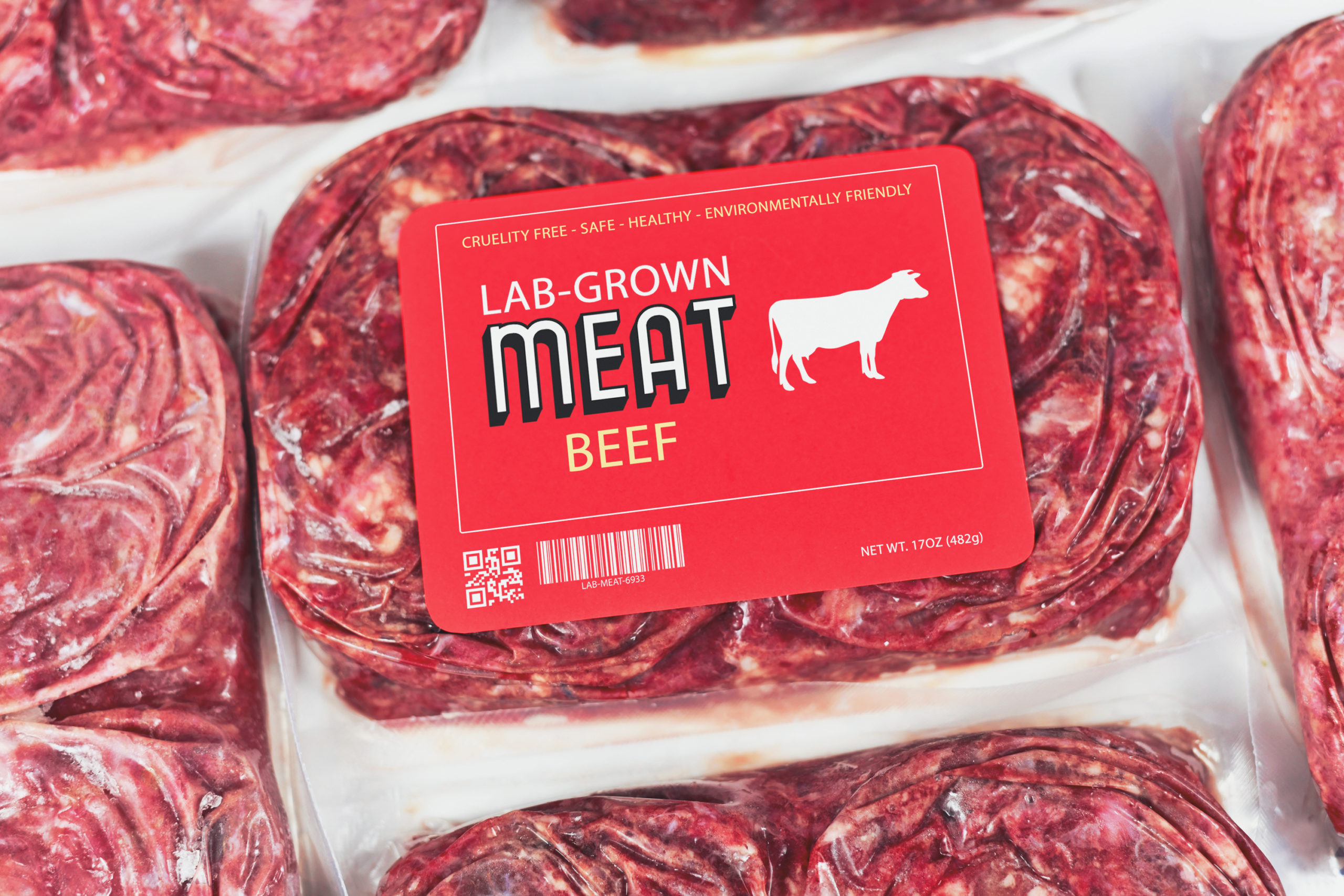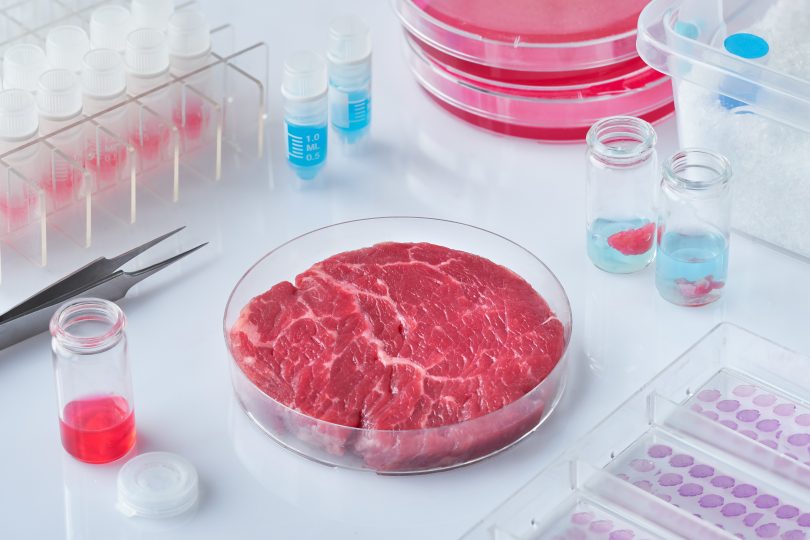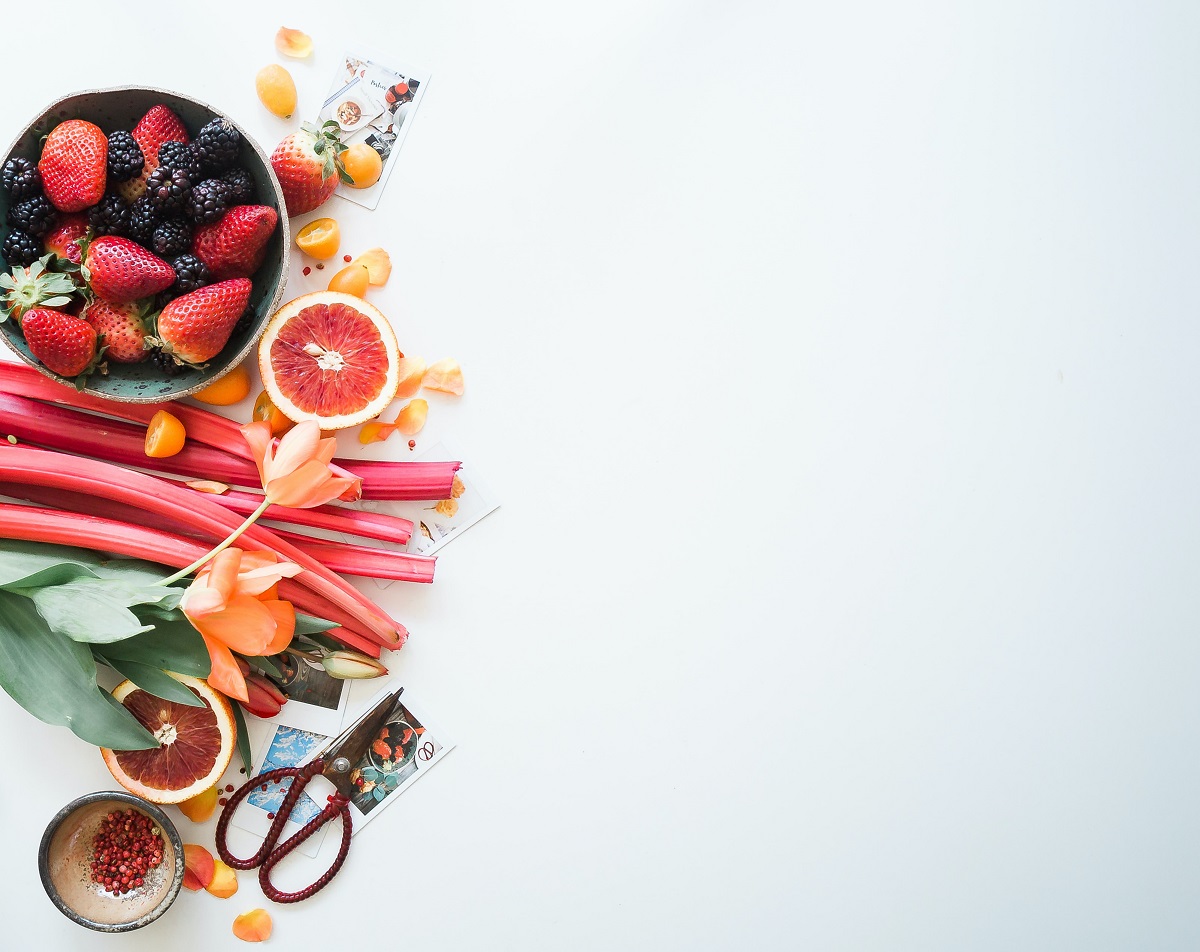Lymbery is global chief executive of Compassion in World Farming, a former United Nations Food Systems Champion, and award-winning author. His latest book, co-edited with Michel Vandenbosch, is Cultivated Meat to Secure Our Future: Hope for Animals, Food Security and the Environment, out on Oct. 24, 2023
In September 2019, the International Space Station was undertaking an extraordinary mission: to produce the first beef in space. Nearly 250 miles above the Earth and hurtling at 15,000 miles an hour, Russian cosmonaut Oleg Skripochka was pictured wearing a white T-shirt and clutching an orange box. He looked remarkably relaxed for someone in the process of doing something so groundbreaking.

A cow was conspicuously absent; instead, cells from a cow had been blasted into orbit aboard the Soyuz MS-15 space rocket. Skripochka and his colleagues mixed them with a nutrient soup and added the mixture into a 3D bioprinter. They were about to “print” the first “cultivated beef steak” ever to be produced in space.
Why choose space as the venue for this groundbreaking experiment? “We are proving that cultivated meat can be produced anytime, anywhere, in any condition,” said Didier Toubia, co-founder and chief executive of Aleph Farms, the Tel Aviv-based company behind the breakthrough. It was driven by a desire to produce meat in a way that held out the promise of being more climate and animal friendly.
Now, back on Earth, that promise is becoming a reality.
Whether beef, pork, or chicken, cultivated, or “lab-grown” meat is now moving from the realms of space-age fantasy to the dinner plate.
In America, food history was made on June 21, 2023 when cultivated chicken—chicken grown from stem cells in a bioreactor—was officially approved for commercial sale. For the first time ever, American diners could tuck into chicken produced without harming a single bird. Instead, stem-cells harmlessly drawn from donor animals would be raised in a soup of nutrients in a bioreactor. Compared to conventional meat, meat from stem-cells promises to need much less land and emit far fewer greenhouse gases. It also tastes the same as meat from an animal, mainly because it is real meat, only not from a slaughtered animal. A triple win for people, animals, and the planet.

Regulatory approval in the U.S. means that two California companies, Upside Foods and Good Meat, can now offer “lab-grown” meat to the nation’s restaurant tables and eventually, supermarket shelves. More will surely follow. Immediately following USDA approval, Good Meat started producing its first batch of cultivated chicken. It was destined for sale to celebrated restaurateur and humanitarian Chef José Andrés, who runs 30 restaurants across the country. This milestone came after the world’s first commercial go-ahead for cultivated chicken was given in 2020 in Singapore.
What has long been seen as the realm of science fiction has since become a multi-billion-dollar industry, researching, nurturing, even serving cultivated meat to paying customers. It is now also catching the attention of policy makers. On Sept. 12, 2022, a positive citation was included in a U.S. Government Executive Order on advancing biotechnological innovation for a “sustainable, safe, and secure” America. This obliged the U.S. Secretary of Agriculture to report on how to achieve food innovation, including through ‘cultivating alternative food sources,’ setting the stage for wider uptake of cell-based foods. And what takes off in America often quickly goes around the world.
The opportunity is vast—today’s animal-based meat industry is worth $1.4 trillion and continues to grow. As things stand, this presents a big problem because the greenhouse gas emissions from our appetite for meat alone look set to trigger catastrophic climate change.

Cultivated meat on the other hand could have a much lower environmental footprint, reducing the impact on climate, land use and air pollution. Latest predictions suggest cultivated meat could secure 10% of the meat market by 2030 and as much as 35% by 2040.
** Click here to read the full-text **








